Help us conserve an important hoard of Roman bronze vessels from Wilcot, near Pewsey.
We have just acquired an important hoard of four bronze vessels, probably buried at the end of Roman Britain, 1,600 years ago. They vessels were carefully nested inside each other, perhaps using heather, bracken and sedge grasses as 'bubblewrap'.
They are so fragile they can only be removed from their packing by an experienced conservators. We need your help so they can be conserved for display in the Museum.
Although buried at the same time, the vessels are of different dates. The largest vessel is a bronze bowl that was made in around 350 AD, so the hoard must have been hidden after this date. The smallest is a wine strainer, which was over 200 years old when buried. The other two bronze bowls were also heirlooms, one of them being over 100 years old.
Lisa Brown, Curator at Wiltshire Museum, has found that the bronze vessels are fragile, and urgently need conservation and cleaning to remove dried on soil and to prepare them for display. Conservation experts, Drakon Heritage and Conservation, have been selected undertake this incredibly delicate task, after which they will be displayed in the Museum, showing how they were deposited in the ground 1,600 years ago.
The conservation and mount making will cost £1,500.
Donations of any size will be very welcome to fund this work.
Donors of £50 and over will receive a ticket to a talk about Roman Vessel Hoards by Richard Henry, who was our Finds Liaison Officer when the hoard was discovered, which is likely to be in January 2024. He is a Roman expert and has published a full report on the hoard in Britannia, a national archaeological journal.
Any funds received above our target will be put towards purchasing other exciting Treasure finds reported through the Portable Antiquities Scheme.
The hoard was found by Paul Hart, using a metal detector, and promptly reported to the Wiltshire Finds Liaison Officer. The finder and landowner generously agreed to donate the vessels to the Wiltshire Museum.
For details about the find please see - https://finds.org.uk/database/artefacts/record/id/890951
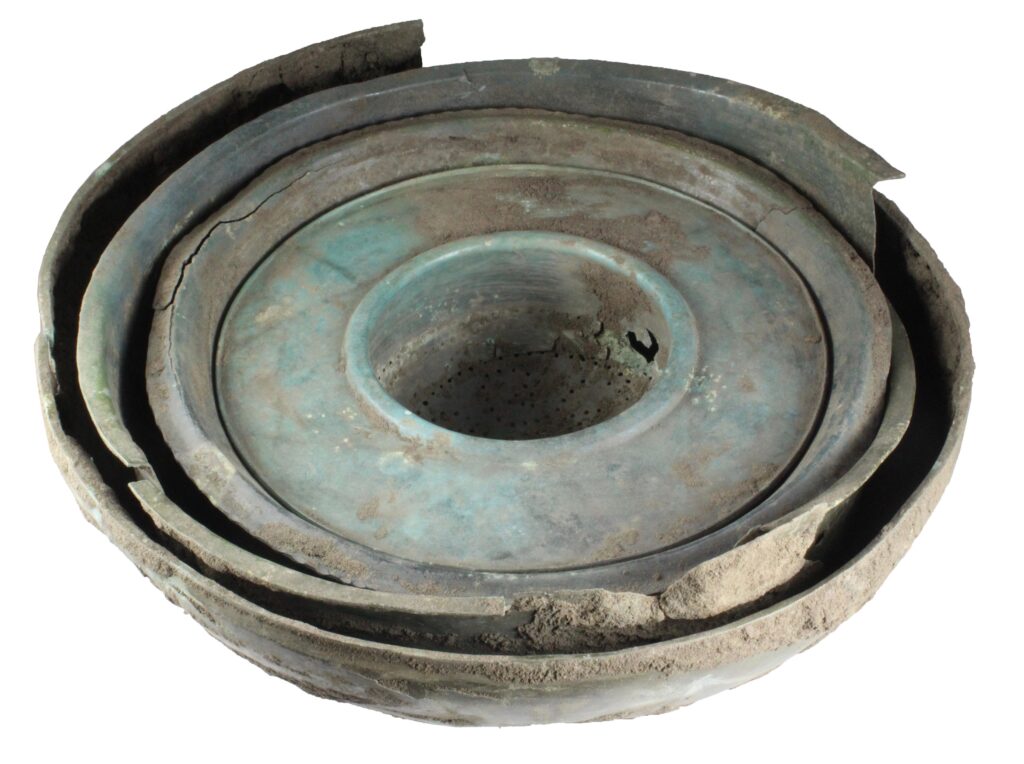
The four vessels in the Wilcot Hoard.
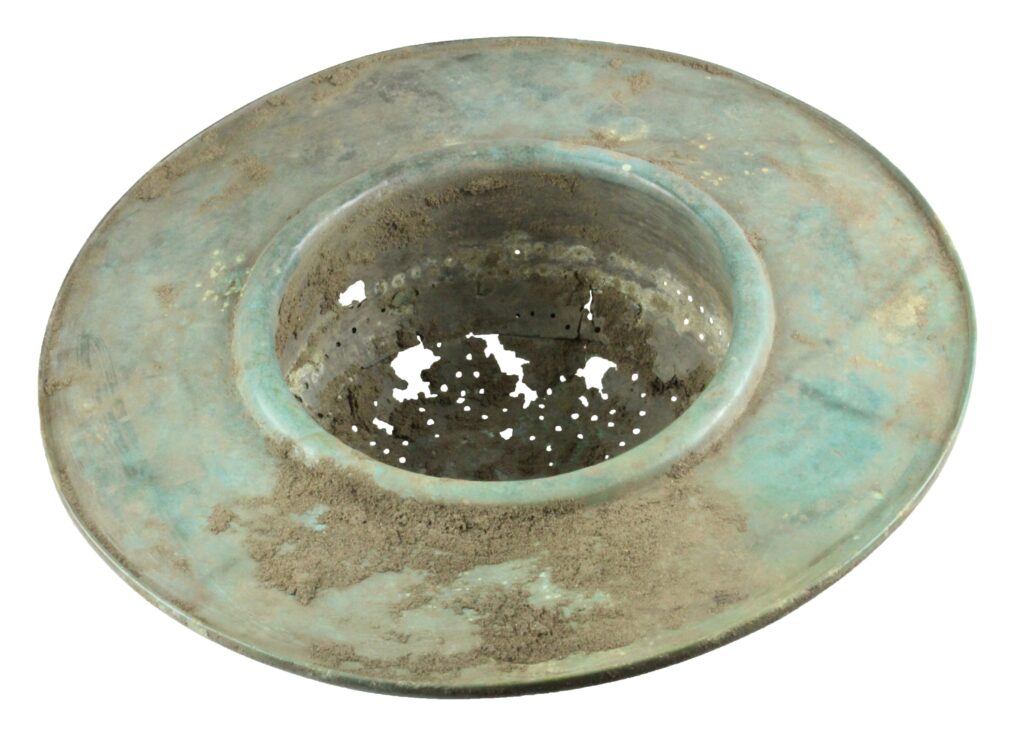
Roman bronze wine strainer from the Wilcot Hoard. Made between 50 and 100AD. View showing the wear and damage inside the bowl of the strainer.
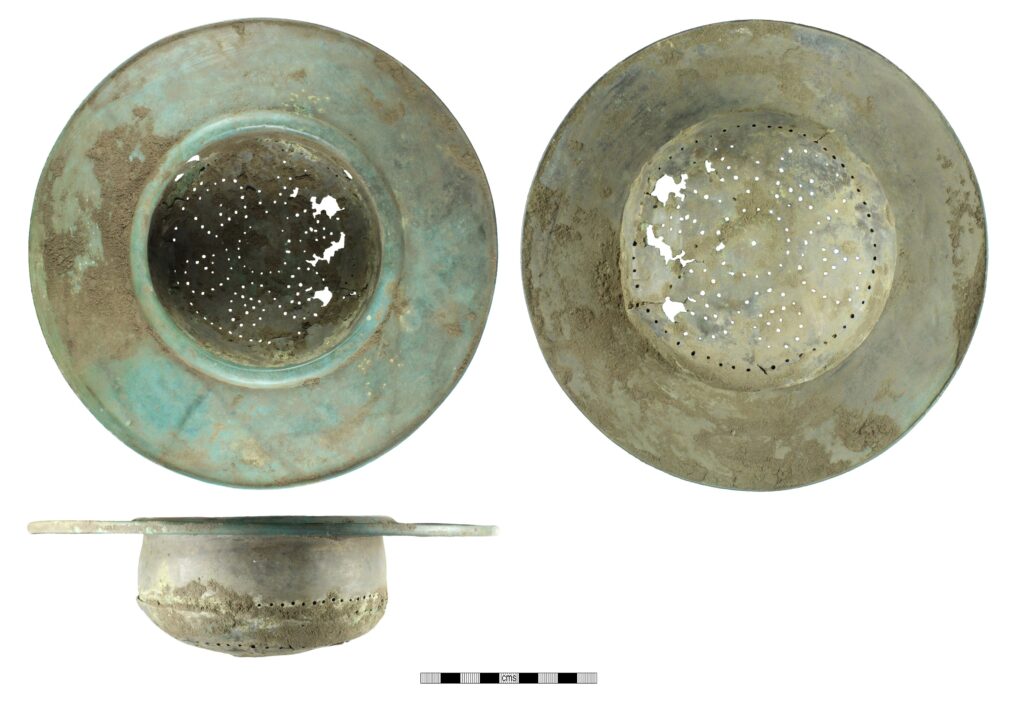
Roman bronze wine strainer from the Wilcot Hoard. Made between 50 and 100AD.
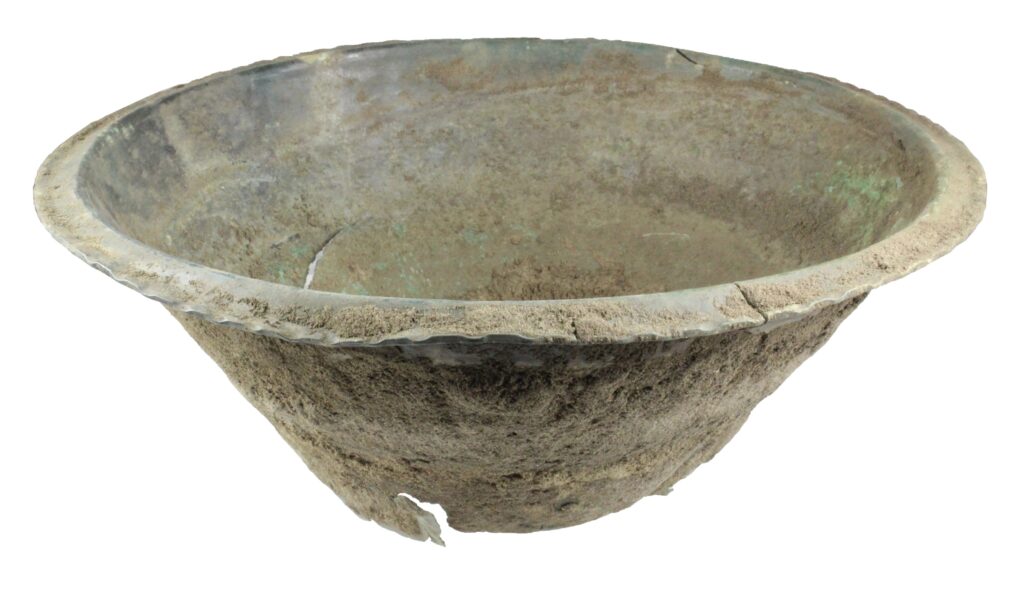
Roman bronze bowl from the Wilcot Hoard, probably made around 300AD.
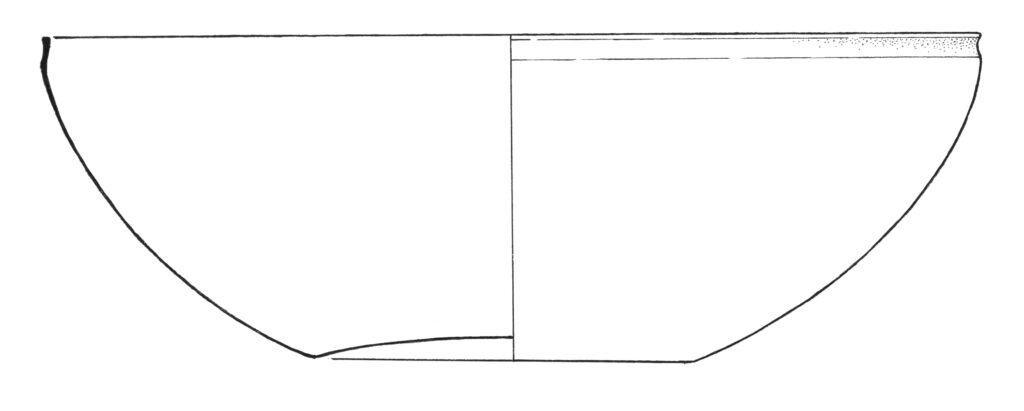
Drawing of the largest bowl, a type known as an Irchester bowl and made around 350AD.

